by @javiersutil and @luciamenafuentes
1.0 Introduction
The Escuadrón de Zapadores Paracaidistas (EZAPAC), or Parachute Sapper Squadron, is the Special Operations (SO’s) unit of the Spanish Air and Space Force. This unit includes some of the country’s most capable operators in all environments and it is charged with the mission of planning and carrying out Air Special Operations.
They are commonly known as “Zapas”, short for “Zapadores” (sappers). International equivalents to Spain’s EZAPAC include the Specialoperationskommandoen in Denmark and the Army Ranger Wing in Ireland.
2.0 Motto, Symbols, Patches and History
2.1 Motto
Their motto is “Sólo merece vivir quién por un noble ideal está dispuesto a morir” (Only those who are willing to die for a noble ideal deserve to live) (source),
2.2 Symbols
The unit’s coat of arms consists of a dagger superimposed on wings indicating that it is a special forces unit of the air force. In the background is a parachute, indicating the unit’s status as paratroopers. Under this the Spanish flag with the acronym of the unit (EZAPAC). Bordering we find the unit’s motto.
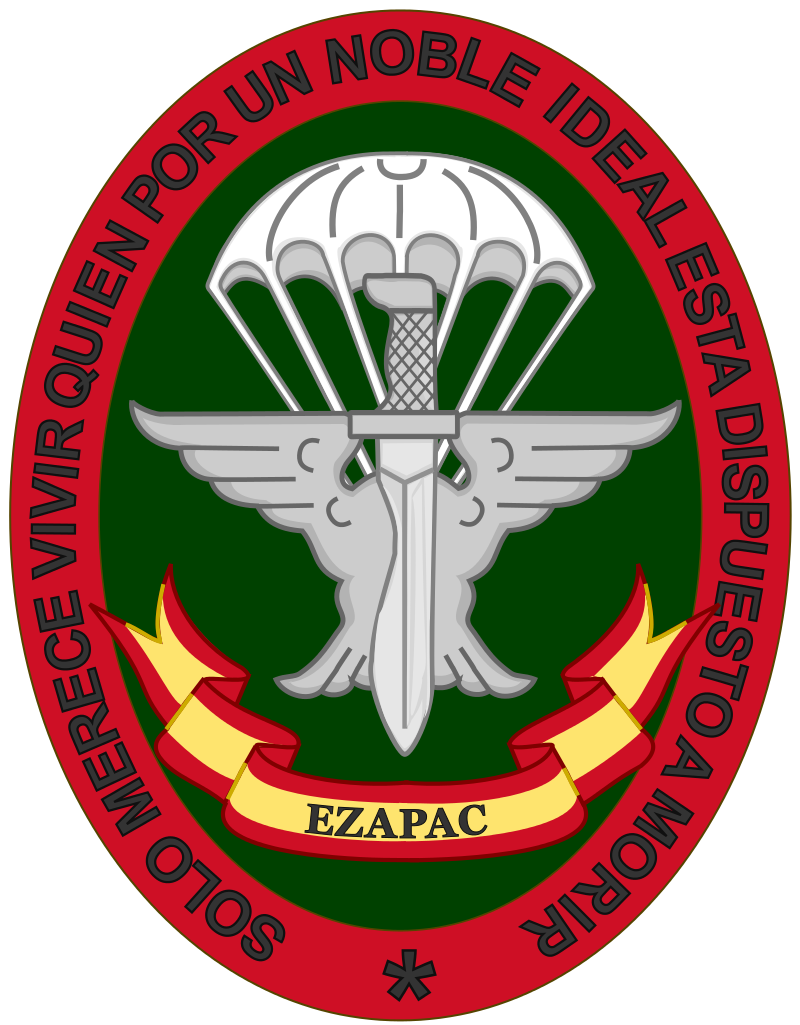
The unit’s standard (left) consists of the shield described above on a green background Each corner has the Badge of the Spanish Air and Space Force.
The unit´s flag (right) consists of the Badge of the Spanish Air and Space Force with a parachute behind it on a green background. Behind this the Cross of Burgundy with a parachute in each corner.
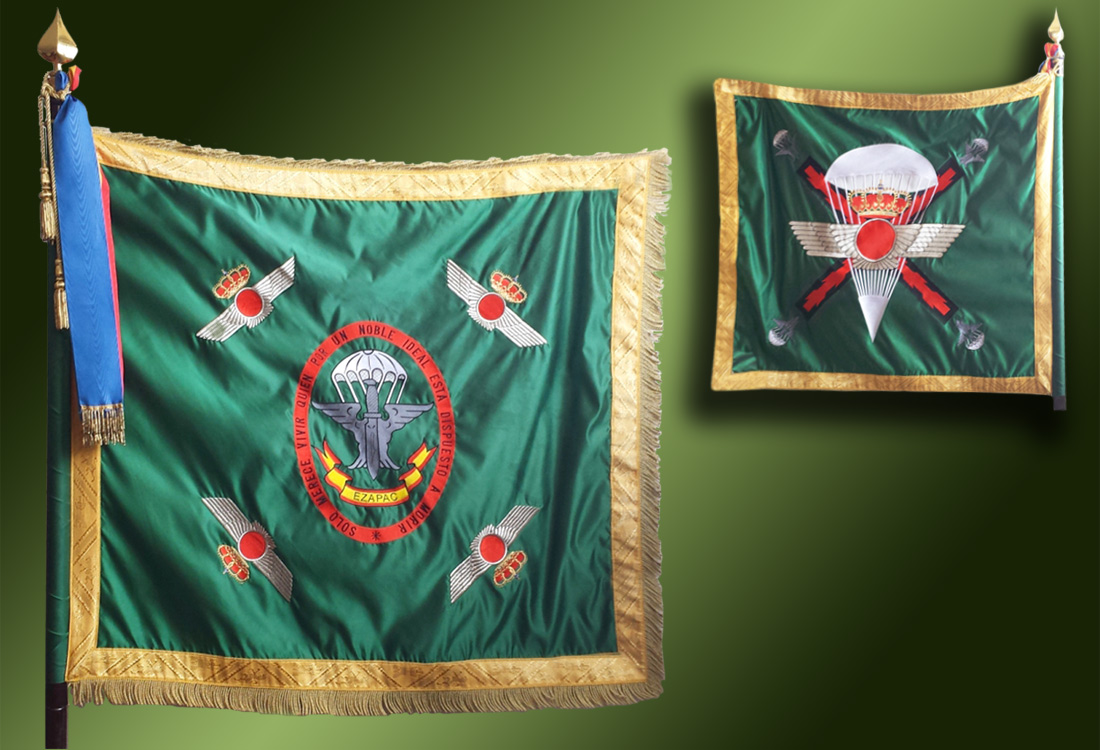
2.3 Patches
The EZAPAC patch.
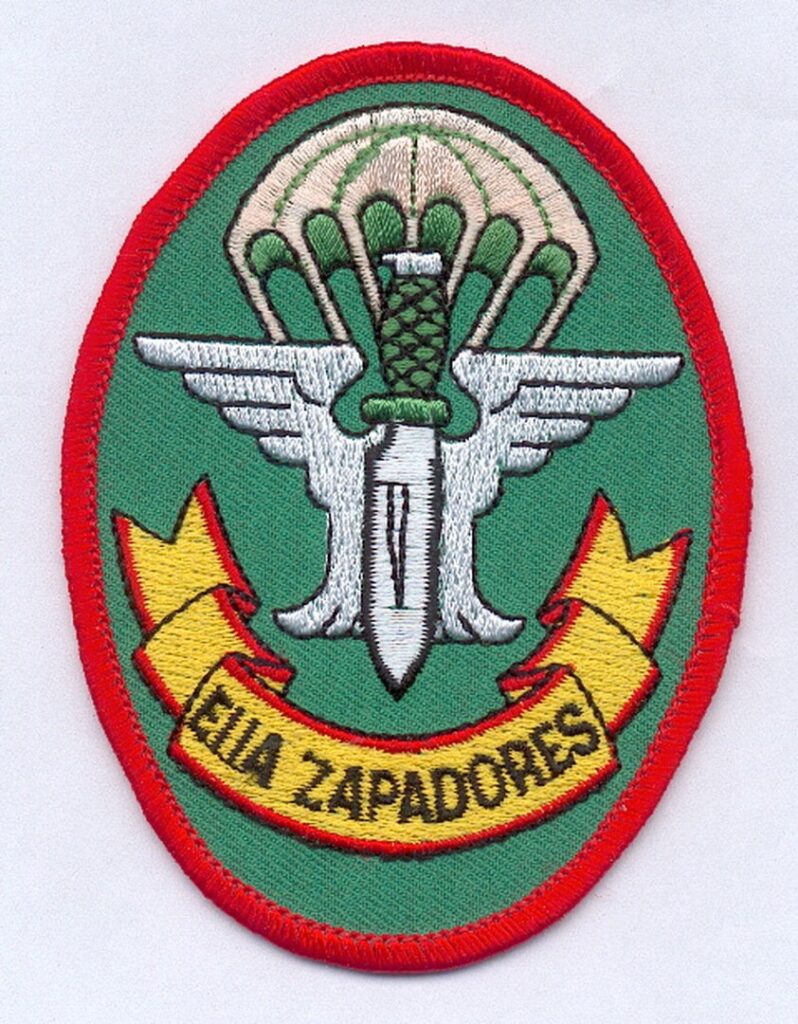
Similar versions in arid version.
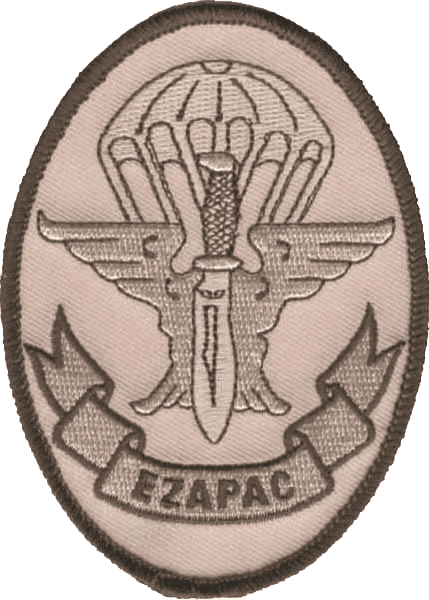
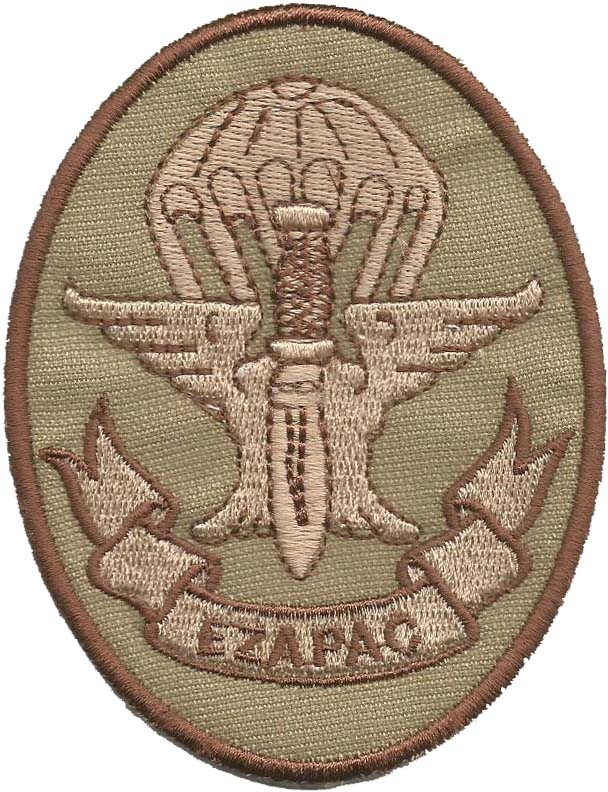
The EZAPAC patch in a pixelated arid version.
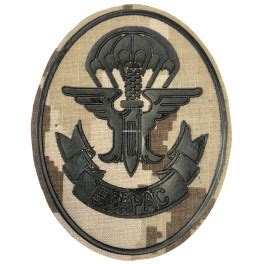
The EZAPAC patch in a pixelated forest version.

2.4 History
Origins (1946-1965)
The doctrine used by the contending countries in World War II (especially the United States and Germany) resulted in the creation of a need in 1946 to form airborne units capable of jumping beyond enemy lines. Therefore, at the beginning of 1946, it established the Primera Bandera de la Primera Legión (1st Flag of the First Legion of Aviation Troops) with the hope of transforming it into a parachute unit. However, they did not achieve this objective as the personnel of this First Flag never underwent the parachute course, nor did they possess the necessary equipment to carry out this activity.
Constituting itself as an independent unit on 13th January 1947, the Primera Bandera de la Primera Legión became known as the pioneering Primera Bandera de Paracaidistas de Aviación (1st Aviation Parachute Flag). This served as a precursor to the current EZAPAC in Spanish military parachuting. On 2nd September 1947, the Bandera members relocated to the Alcantarilla Aerodrome to undergo the parachute course, which they completed on 10th April 1948.
Development
During the Ifni War (1957-1958), the unit underwent a name change on 3rd April 1953, becoming the 1st Parachute Squad. Operating under this new name, they carried out combat jumps from French aircraft in various missions, including the vicinity of La Hagunia and Samara.
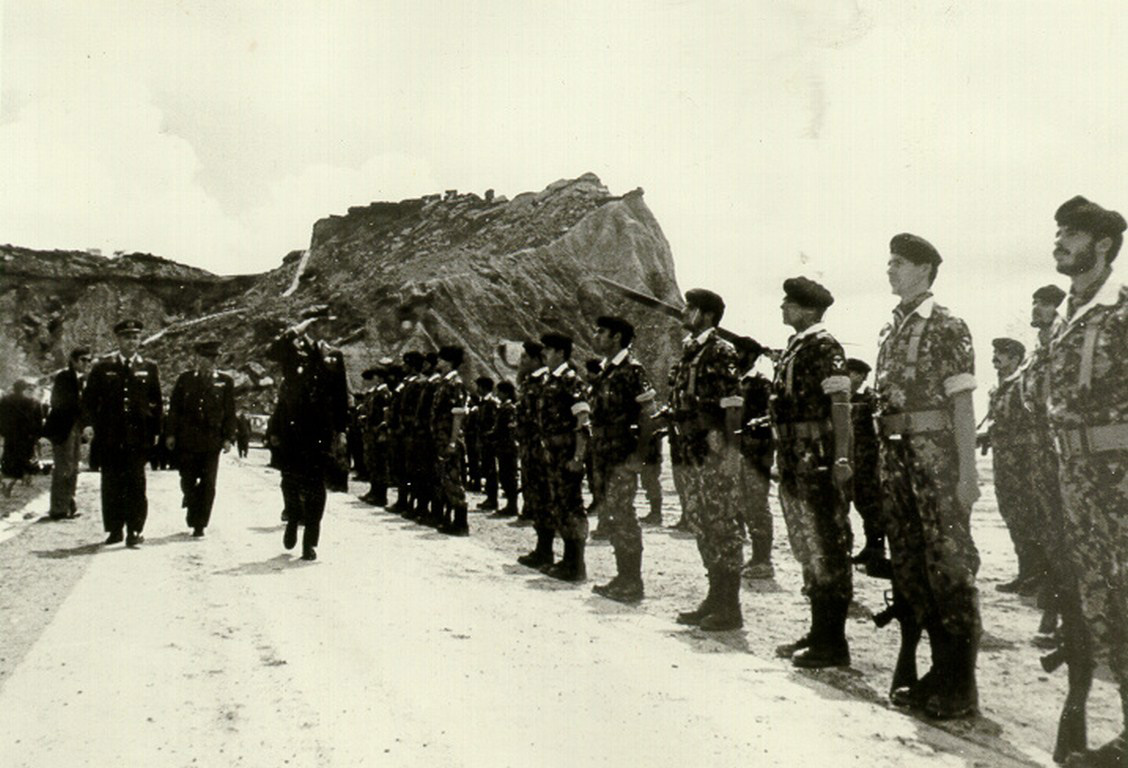
On 9th September 1965, the 1st Squad was renamed Parachute Sappers Squad (EZAPAC). It became an independent unit under the authority of the Commanding General of the Tactical Air Command (MATAC) and relocated to the Alcantarilla Aerodrome, where it has been stationed ever since.
Escuadrilla de Zapadores Paracaidistas (1965-2002)
During the initial years, the unit made significant advancements in parachute training, encompassing both automatic and manual opening modes.
On 7th November 1975, as part of Operation Golondrina for the evacuation of the former Spanish Sahara, the Parachute Sapper Squad was relocated to the Gando Air Base. It remained there until 20th December 1975, when it returned to its home base in Alcantarilla. In the late 1970s and early 1980s, the unit attained a high level of instruction, resources, and procedures in high-altitude launches with oxygen. This was possible by the United States Air Force training courses.
On 30th January 1983, due to their accumulated experience in survival, escape and evasion, combat rescue, and resistance, the EZAPAC was assigned the additional task of training aircrews in these subjects in various environments. From 8th January 1987 until 22nd July 1991, the unit participated in Search and Rescue (SAR) detachments in La Coruña, undertaking maritime rescue missions. In total, they were involved in the successful rescue of 250 castaways.
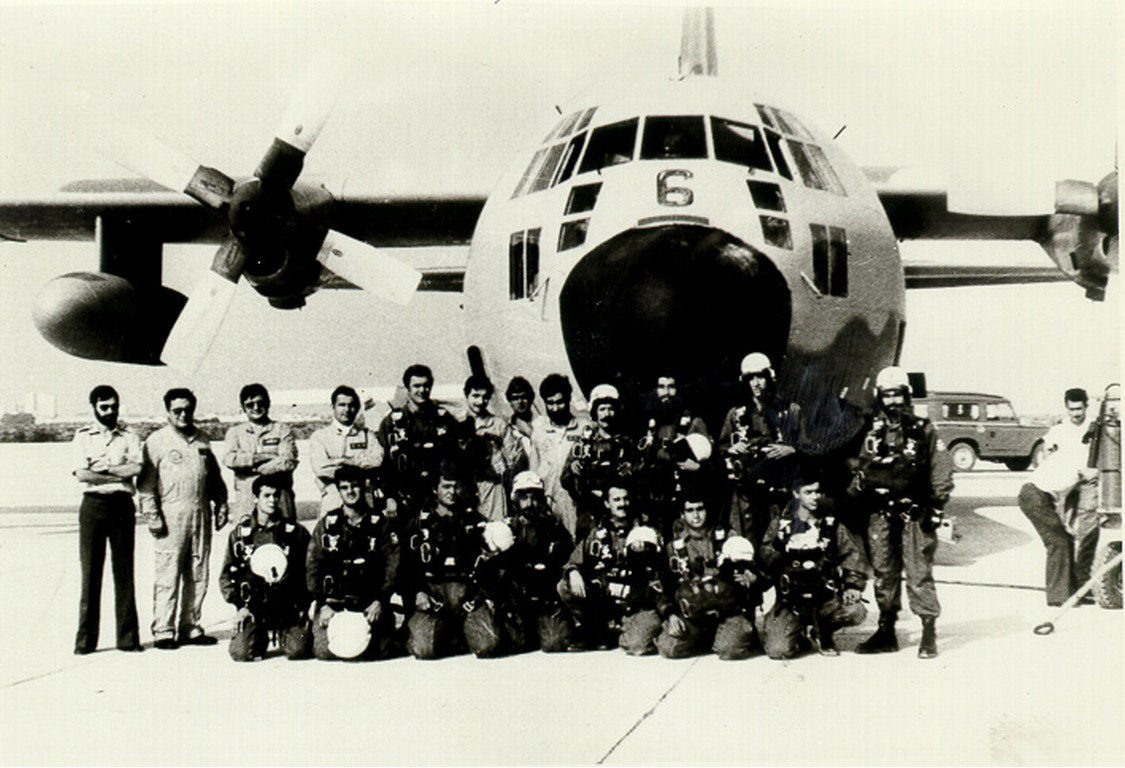
Increasing Activity
Throughout 1987, 1988, and 1989, the Parachute Sappers Squad actively collaborated in successive rescue campaigns during floods that occurred in the Region of Murcia. For their actions in these campaigns, they were awarded the Collective Silver Medal of Civil Protection with a blue badge. In the early 1990s, the EZAPAC engaged in its first international missions: Namibia in 1989-90, Bosnia from 1993 to 2000, and Rwanda in 1994.
On 9th February 1994, the Unit underwent restructuring by the Air Chief of Staff, resulting in its strengthening with increased personnel and resources. It was assigned the primary role of a Special Operations Force (SOF).
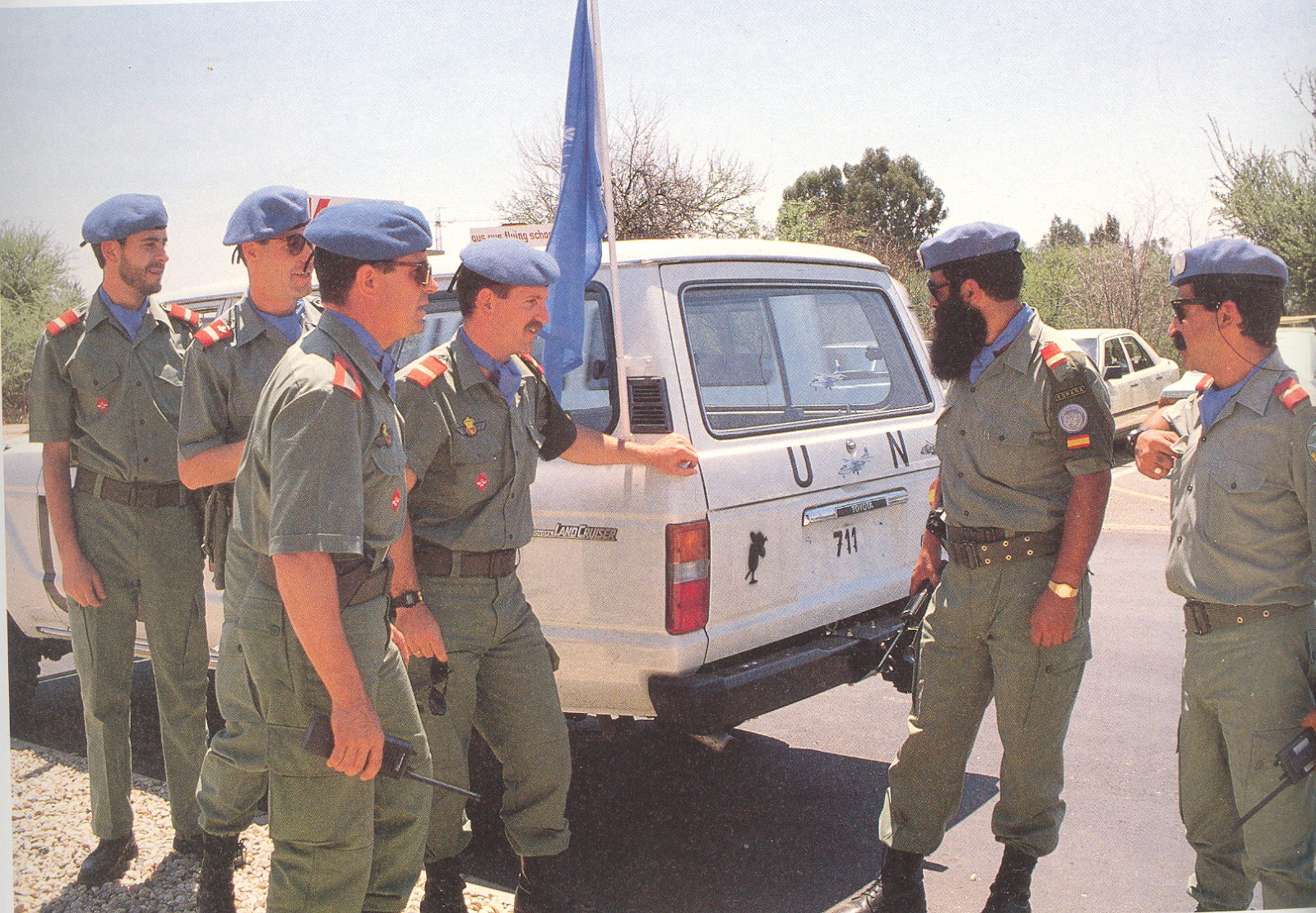
Escuadrón de Zapadores Paracaidistas (2002-Today)
On 3rd May 2002, the Parachute Sapper Squad transitioned into a Parachute Sapper Squadron following Instruction number 81-2002 of 11th April, issued by the Chief of the Air Chiefs of Staff. As a special operations forces (SOF) unit, the EZAPAC intensified its training efforts with the introduction of new equipment and improved techniques while preserving its cherished traditions.
The squadron also embarked on new international deployments, such as protecting Group 22’s P-3 Orion in Djibouti as part of Operation Enduring Freedom, aimed at combating international terrorism from 2002 to 2004.
Subsequently, EZAPAC swiftly found itself in Afghanistan. In August 2004, the first detachment arrived in Mazar-i-Sharif with a Tactical Air Control Teams (TACP) team. In 2005, as part of NATO’s ISAF operation, EZAPAC deployed a team of Pararescue Jumpers (PJs) along with the 48th Wing’s Superpumas and up to five TACP teams in Herat and Qala-i-Naw, situated in the north-western provinces of Herat and Badghis. The squadron’s experience in these fiercely contested regions significantly contributed to the expansion of its capabilities. The final contingent of sappers returned from Afghanistan to Spain on 1st November 2013, effectively concluding the Squadron’s presence there.
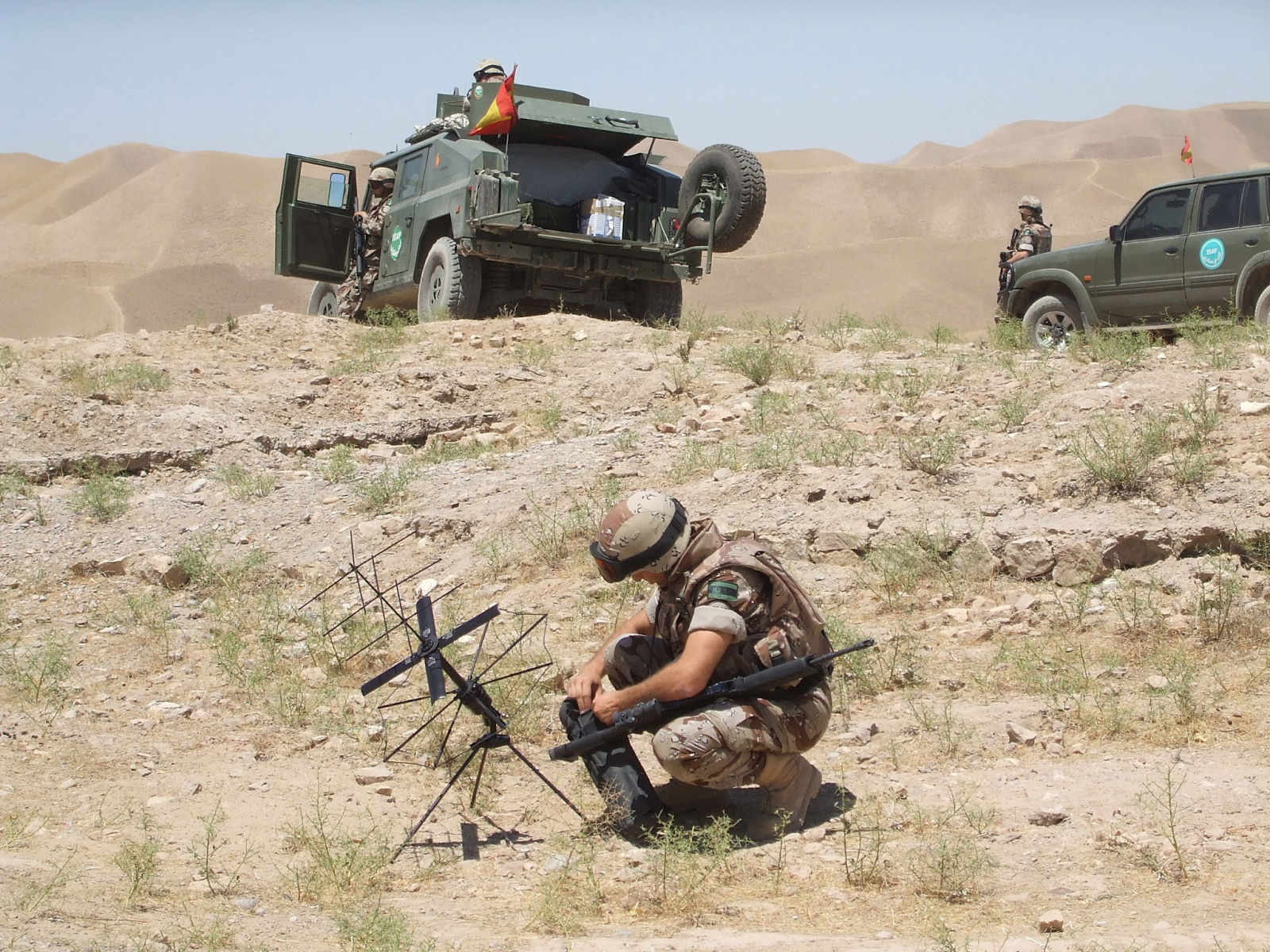
An elite unit with a global presence
Starting from February 2015 and under the command of the international coalition established at the NATO summit in Wales in September 2014, and with the endorsement of two UN Security Council resolutions, support from the European Union, and authorization from the Congress of Deputies on 22nd October, the Squadron has been engaged in the A/I mission in Iraq. Its objective is to train and qualify Iraqi security forces in their fight against DAESH (ISIS), and it has remained committed to this mission uninterrupted until the present day.
On 4th September 2016, within the framework of Cooperative Security and to enhance military capabilities in the area of prevention and stabilization in the Sahel region, EZAPAC was tasked with leading the formation of a Special Air Operations Unit within the Senegalese Air Force. The unit achieved its final operational capability (FOC) in 2017 and continues to engage in advanced training activities.
(Source), (source), (source), (source)
3.0 EZAPAC: Organization
3.1 Structure
EZAPAC is a special operations unit of the Air and Space Army. The EZAPAC depends operationally on the Combat Air Command (MACOM) and organically on the General Air Command (MAGEN).
The basic nucleus is the operational teams or SOATU-ALI (Special Operations Air Task Unit), which the Air Force places at the disposal of the Joint Special Operations Command. The Parachute Sapper Squadron (EZAPAC) also has a headquarters, with its secretariat.
It has three squadrons in its operational structure (as indicated in the graph below):
- Special Forces Squadron: This is also known as SOATU-ALI 1 to 6 (Special Operations Air Task Unit – Air Land Integration). It includes the six 16-person operational teams (EO) in charge of special air operations.
- Operational Support Squadron: This includes the General Store, Weapons, Special Equipment (CIS), Automobile, Folding Room and SOATU-ALI 8 sections.
- Training Squadron: also known as SOATU-ALI 7.

The unit also has an auxiliary body to the command called the General Secretariat (Secretaría General). This is responsible for specific tasks such as operations, intelligence, SOALI (Special Operations Air Land Integration), as well as creating and updating the doctrine in special air operations, resources, personnel and an additional SOATU-ALI 9.
3.2 The Joint Special Operations Headquarters (MCOE)
The Joint Special Operations Headquarters (MCOE) controls the three SOF branches in Spain; the Army’s MOE, the Navy’s FGNE, and the air force’s EZAPAC. It depends on the Spanish Operational Command (MOPS). These three wings possess different characteristics and objectives but sometimes conduct joint exercises at both national and international levels. An example is the counterterrorism operation ‘Flintlock 19’ in which SOF from all three branches cooperated to train African units in the Sahel. (source)
The MCOE is, in a sense, a command designed to carry out missions with the joint contribution of the specialised SO personnel from the Army, Navy, and Air Force. Operators in MOE, FGNE, and EZAPAC are trained and prepared by their respective bodies and are ultimately expected to operate efficiently in all environments. Their capabilities allow them to conduct all kinds of operations, under all meteorological conditions. Thus, they undergo a tough training process in which they learn diving, climbing, skydiving, skiing, and other specific skill sets that allow the operators to conduct their missions successfully.
(Source) (source), (source), (source), (source)
3.3 Recruitment
EZAPAC’s headquarters is located in the Alcantarilla Airbase in Murcia, in the South East of the country. The same town also holds the Escuela de Paracaidismo Méndez Parada (Parachuting School), where EZAPAC operators are trained. The other training facility, the Military School for Mountain and Special Operations, is located in Jaca, in the mountainous northern region of the Spanish Pyrenees.
Requirements
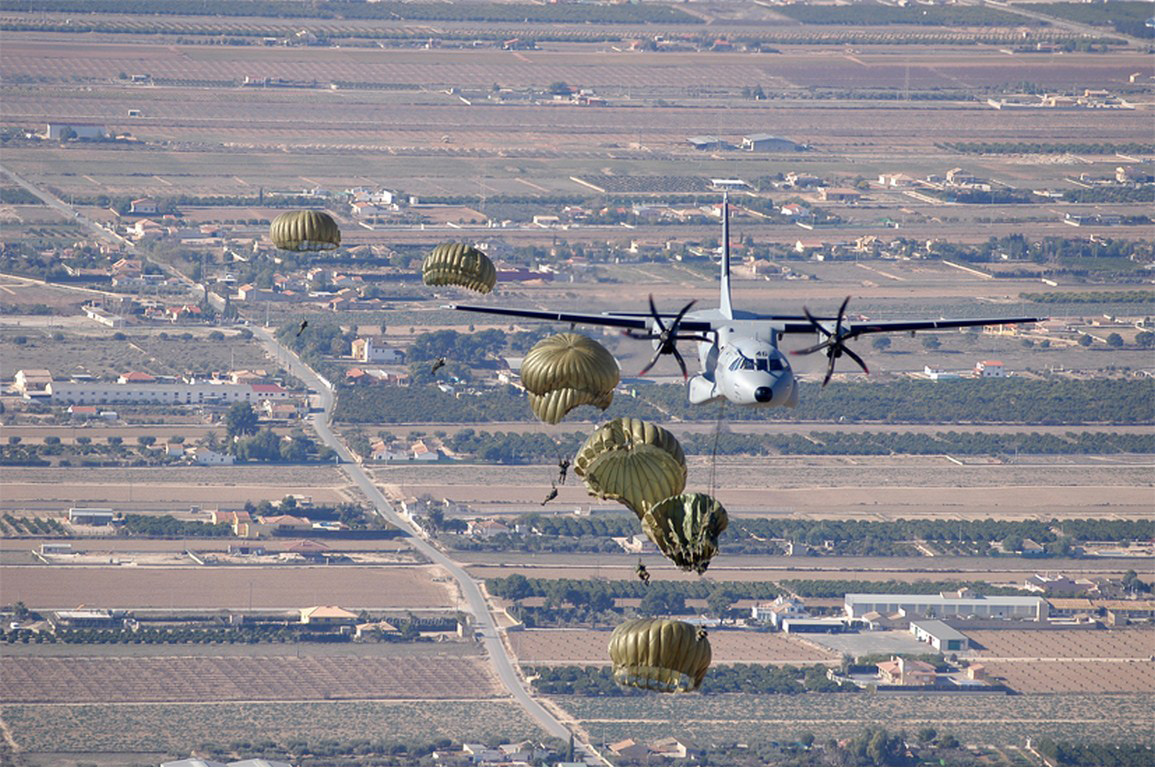
To access the unit, it is necessary to pass the training plan designed for the selection of candidates. This includes a parachute course if the candidate does not already have one. The average number of personnel who are admitted is between 30% and 40%. In 2023, only a dozen of the 40 candidates who started the selection process were successful.
Officers and NCOs who apply must follow a specific training plan that follows the same line of subjects and evolution as that of the troops. Many of them have already served in the Unit in previous postings, have been teachers in the ETESDA or have passed the EMMOE Special Operations Commanders Course.
Selection
The future EZAPAC operators have to undergo a training period of up to 9 months. The hardest part is the final two weeks where they are asked to prove their worth, their ability to excel and their sacrifice.
- The first phase consists of basic training. This includes theoretical and practical classes in:
- Topography.
- Marching.
- Transmissions.
- Weapons.
- Shooting.
- Life and movement in the mountains.
- Parachute jump instruction.
- Physical training.
- Self-defence.
- The second phase focuses on deepening general combat training, improving physical condition, fatigue and stress tolerance, teamwork and spirit of sacrifice.
- Those who pass the two phases will then receive tactical combat training. These are two weeks in which stress and fatigue are maximised to see how they can react in a real combat situation.
Only a few make it through this tough final phase which aims to push the candidate to their physical and psychological limits.
Apart from the fact that all members must pass the parachutist course, they must also have one or more specialisations:
- Security and defence.
- Office automation.
- Armourer.
- Supply assistant.
- Cartography.
- Imaging.
- Telecommunications equipment operator.
- Health.
In the operational teams, there are only security and defence specialists and telecommunications equipment operators.
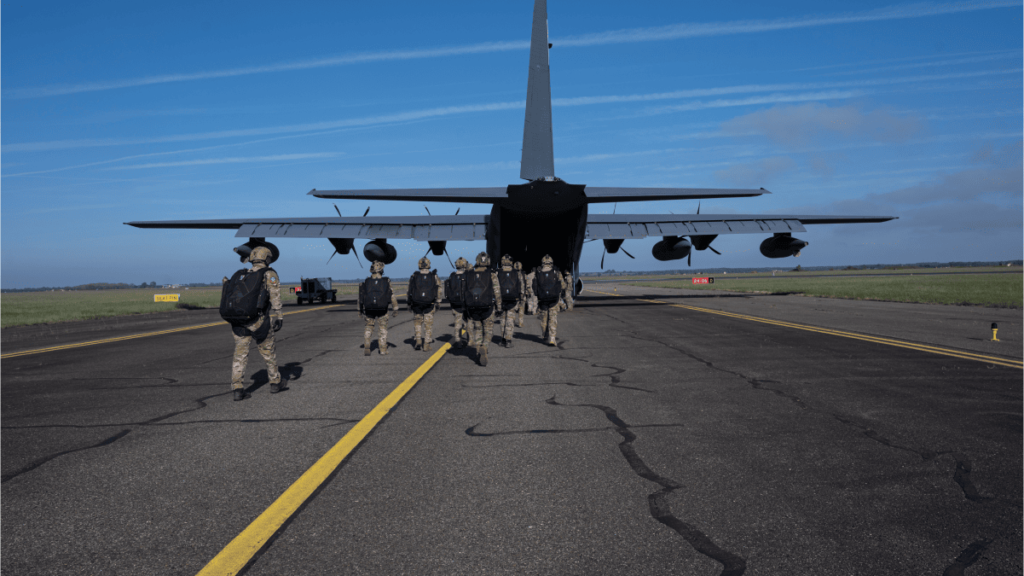
Training
Operator training covers several areas, being essential for entry into the unit, passing the corresponding parachuting courses and completing the necessary training plans.
Mandatory technical training covers the following areas:
- Parachuting: automatic opening, manual opening (free fall) and HALO-HAHO (high altitude with the use of oxygen).
- Weapons handling: individual and collective.
- Handling of VHF, UHF, HF and SATCOM transmission equipment.
- Combat techniques: day and night.
- Skiing techniques and winter life and movement.
- Life and movement in the mountains: climbing, abseiling, Fast-Rope.
- Topography and orientation: day and night.
- Amphibious and underwater activities: combat rowing, diving, motorboat handling, surface work.
- Survival, evasion, resistance, escape and rescue techniques (SERER) in combat and at sea, resistance to interrogation and treatment of prisoners.
- Aircraft driving in tactical missions.
- TCCC rescue and first aid.
- Driving of vehicles.
- Tactical intelligence.
- Special Actions.
- Special Operations (Tactical).
EZAPAC also prepares and keeps activated for the Spanish Joint Rapid Reaction Force (FCRR), an Operational Team with its General Staff, a TACP team and a team of precision marksmen.
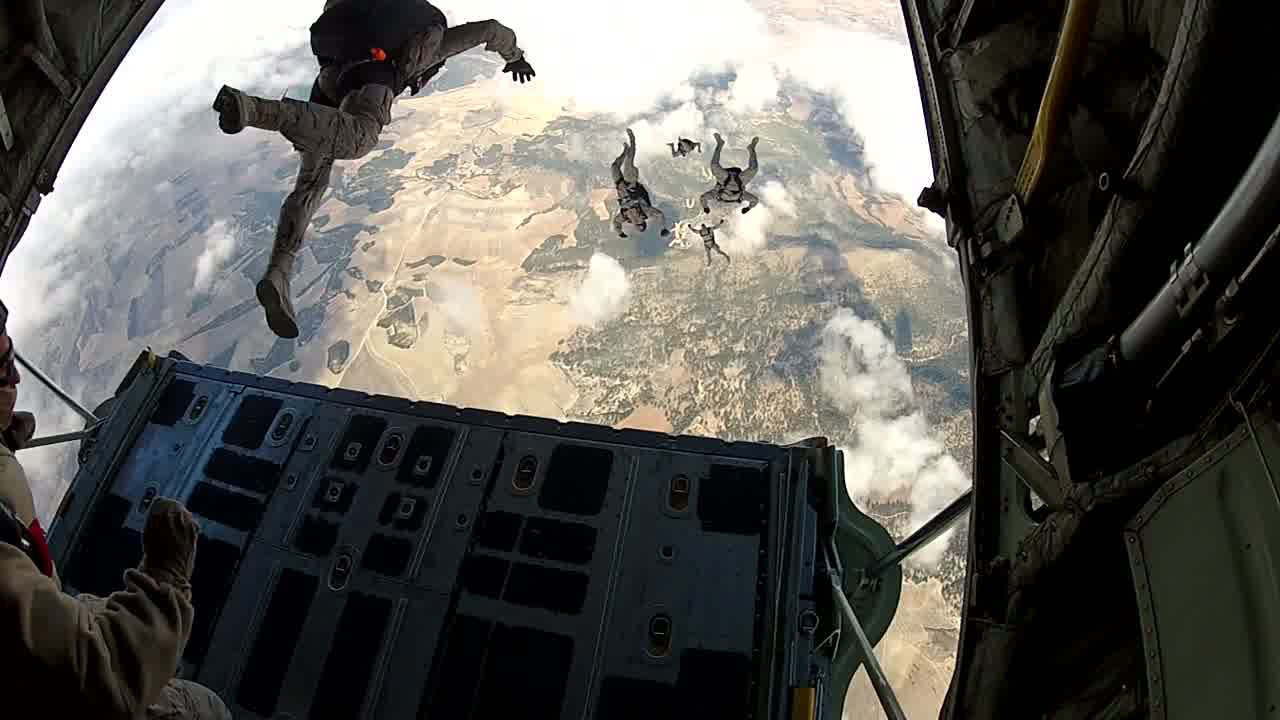
Cooperation with other Units
Part of the training is joint work with the Army’s Special Operations Command (MOE), the EADA, the Marine Brigade’s FGNE or the Police’s Special Operations Group (GEO).
It also includes foreign units such as the Italian Army’s Colonel Moschin Battalion, the French 9th Parachute Dragoon Regiment, the US Navy’s SEAL Teams No. 8, 9 and 10, the British Special Air Service (SAS), the US Army’s 1st, 3rd and 10th Special Groups, the Portuguese Commandos and members of the USAF’s 3/21 Special Force.
Possible Foreign Recruitment
To join the Spanish Armed Forces is required to have Spanish nationality. However, nationals of certain Latin American countries and Equatorial Guinea can also participate in the selection process for entry into the rank of Troops and Marines.
4.0 EZAPAC: Equipment
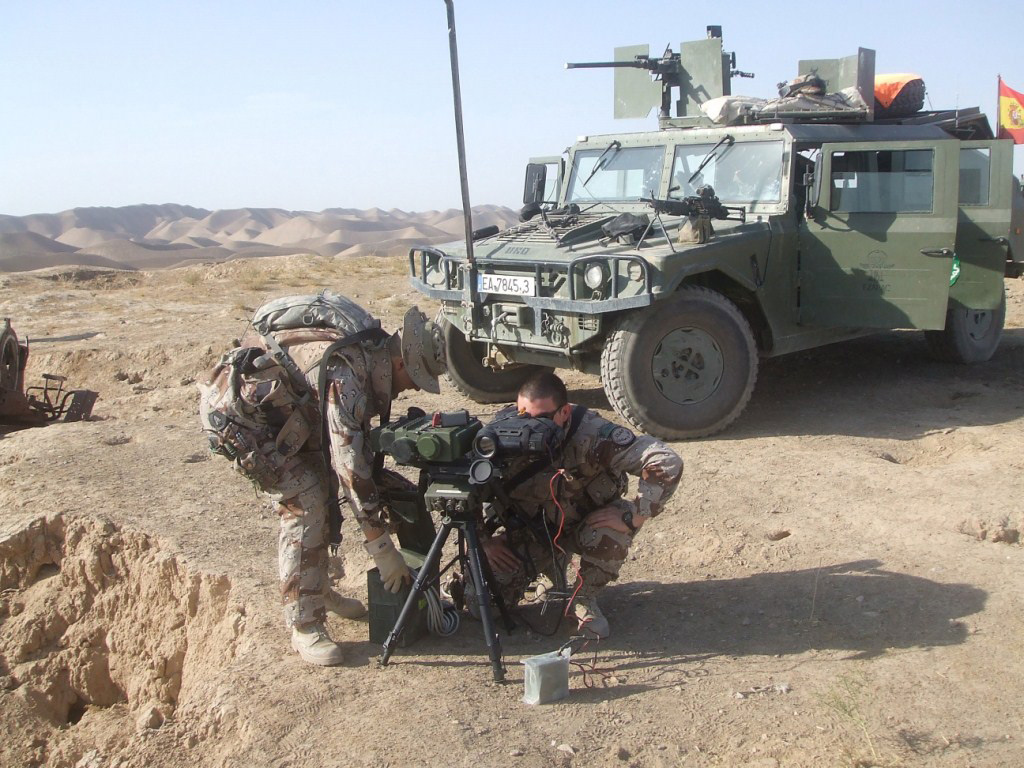
The EZAPAC is equipped with modern and high-quality materials. Most of this material is of Spanish origin or comes from the United States and the European Union.
4.1 Weapons
Guns
- HK USP Compact semi-automatic pistol with 9 mm silencer.
Shotguns
- Remington 870 shotgun.
Sub-machine guns
- 5.7 mm FN P90 submachine gun.
- HK MP7 submachine gun with red dot sight 4.6×30 mm.
Assault Rifles
- Heckler & Koch G36 KV assault rifle.
- Heckler & Koch G36 L Assault Rifle (Spotter precision marksman’s kit).
Machine guns
- FN Minimi For 5,56 mm calibre.
- FN MINIMI MK3 – 7.62x51mm NATO.
- FN MINIMI MK3 – 5.56x45mm NATO.
- FN MAG for 7.62 mm calibre.
- Browning M2 in 12.70 mm calibre.
- MG42.
Sniper rifles
- Accuracy International AW-AWF .308 in 7.62 mm.
- Accuracy .50 12.70 mm anti-material.
- Accuracy AX.338 in 8.6×70 mm calibre.
- Barrett M107 in 12.7 NATO (with BORS fire direction).
Grenade launcher
- Heckler & Koch AG36 with integrated 40 mm grenade launcher.
Rocket Launcher
- C-100.
- C-90C.
4.2 Vehicles
EZAPAC uses highly mobile, all-terrain armoured vehicles.
- URO VAMTAC S3, S4, S5.
- RG-31 Nyala.
- Lince Iveco LMV.
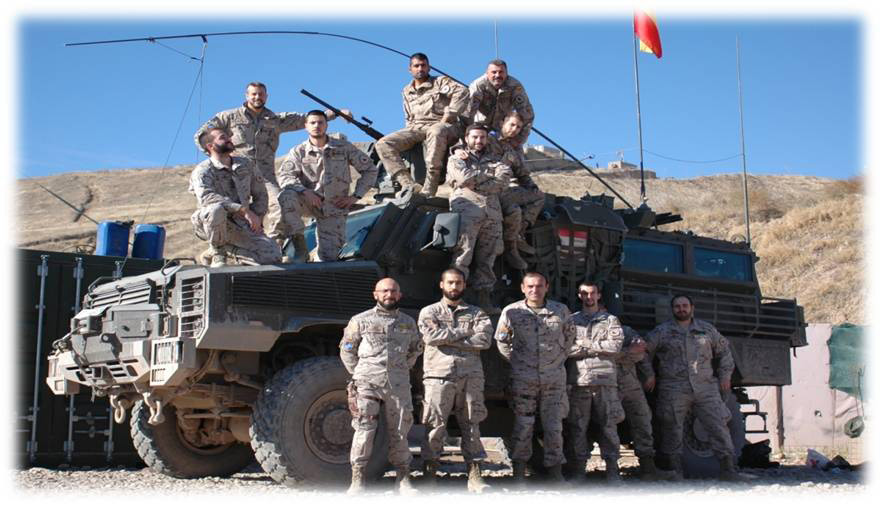
Helicopters
EZAPAC uses transport helicopters for its missions.
- AS-332B Super Puma.
- NH-90.
These helicopters belong to the 803 Squadron (48th Wing).
Aircrafts
EZAPAC uses transport aircraft for its missions.
- C-295 (T.21).
These aircraft belong to the 35th Wing.
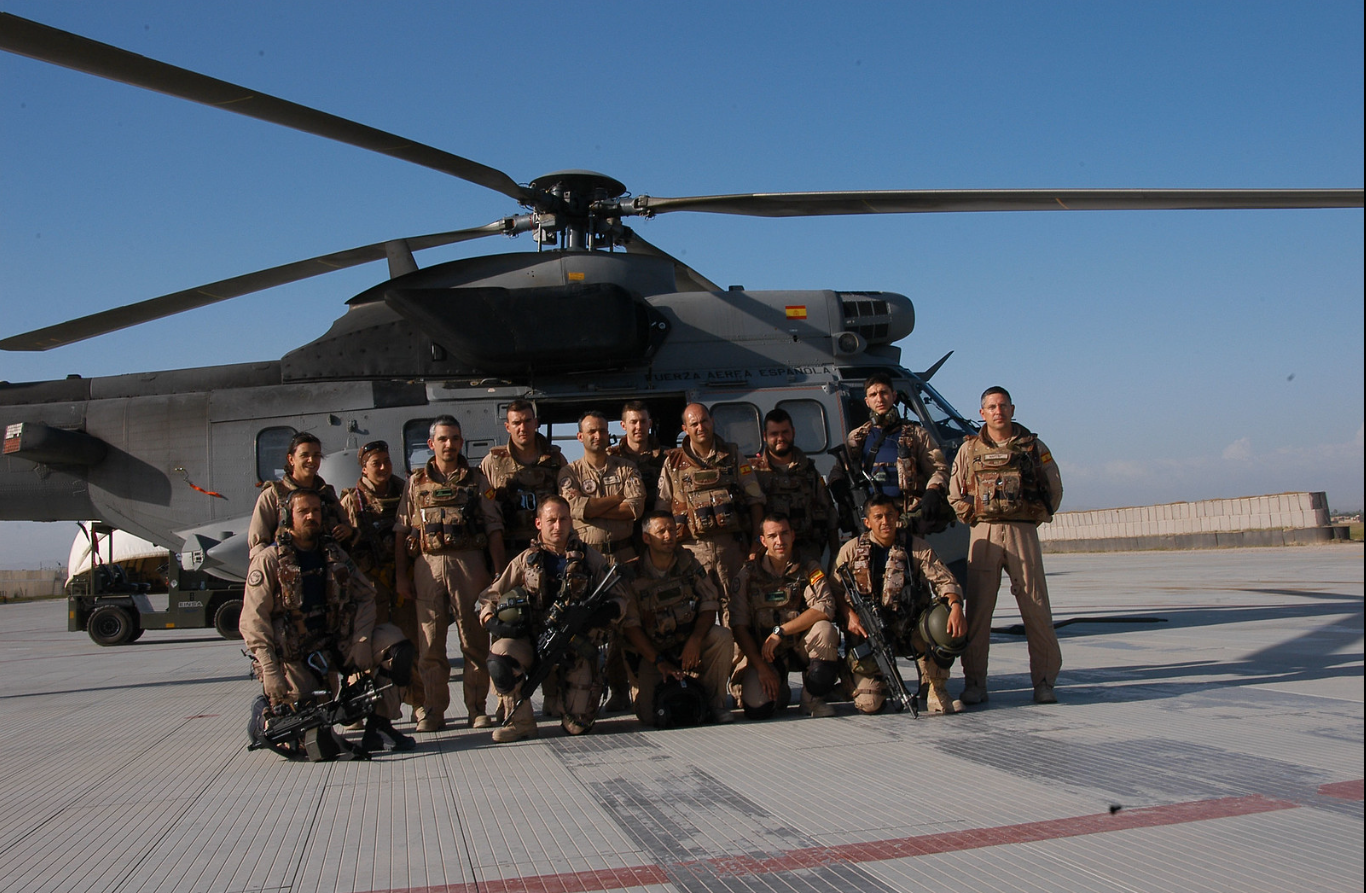
5.0 Tactical-Operational Information
The Parachute Sapper Squadron (EZAPAC) is the Special Operations (SO) unit of the Air and Space Army. Per definition, SOs are military operations conducted by specially designed, organised, trained and equipped forces to achieve high-value objectives in sensitive or hostile areas through the use of unconventional and innovative means and tactics.
Within the SOs, the Squadron’s defining difference is its ability to plan and conduct Special Air Operations (SAO). These SAOs can be defined as “operations, at any level of conflict, in support of unconventional actions and psychological, covert and clandestine activities”. In this sense, the Squadron constitutes the ground segment of the Air and Space Army’s special air operations capability, which also counts fixed-wing and rotary-wing aircraft as air elements.
5.1 Operations
EZAPAC’s main operations are as follows:
- Namibia (1989-90). First deployment. A detachment was mandated by the UN to provide security for the Air Force detachment.
- Bosnia (1993-2000). EZEPAC participated in IFOR and SFOR missions in Bosnia by continuously detaching TACP/FAC teams on three-month relays. Teams deployed to various classified locations from brigade headquarters in Medjugorje.
- Rwanda (1994). Transport aircraft escort and search tasks were carried out to locate refugee camps.
- EZAPAC deployed detachments abroad to protect P-3 Orion Group 22 in Djibouti as part of Operation Enduring Freedom in 2002-04.
- Afghanistan (2004). They deploy a TACP team. This was the first detachment and was made in Mazar-i-Sharif.
- Since 2005, in the framework of the ISAF operation, an EZEPAC rescue team was deployed in Herat and Badghis provinces together with the Superpuma of the 48th Wing. The experience resulted in the expansion of EZAPAC capabilities. The last contingent returned to Spain in November 2013.
- Since 2015, EZAPAC participated in the mission in Iraq to train Iraqi security forces and corps in their fight against ISIS at the Gran Capitán Base in Besmayah, on the outskirts of Baghdad. This mission ceased temporarily due to the worsening security conditions and the COVID-19 pandemic.
- In 2016, to strengthen military capabilities in the Sahel area, EZAPAC took charge of the formation of an SAO Unit in the Senegalese Air Force, which reached its final operational capability in 2017.
(Source), (source), (source), (source), (source)
5.2 Core Purpose
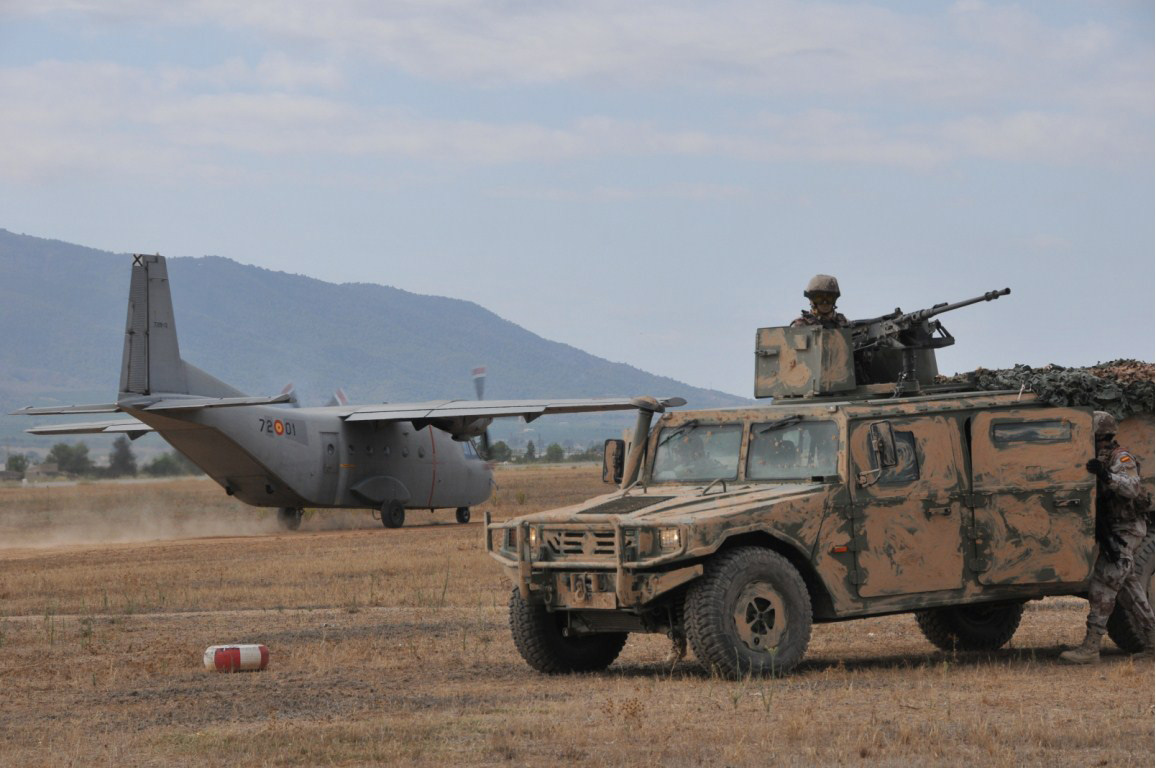
EZAPAC’s mission is to conduct special air operations and to support, in the area of Force Protection, the functions of the Air Units, and when determined, the Air Force Units assigned to NATO.
Special Air Operations (SAO)
The SAO missions carried out by members of the Squadron in coordination with aircraft and/or helicopters are as follows:
- Combat Controllers (CCTs) in support of personnel and cargo launches, and take-offs on unprepared runways.
- Creation of TACP teams (Tactical Air Control Teams) in support of CAS (Close Air Support) missions for ground units.
- Conducting Personnel Recovery (PR) operations in hostile areas.
Within NATO doctrine
Within NATO doctrine, EZAPAC as a special operations force is assigned these main missions:
- Direct Action (DA), such as ambushes, air assault, terminal gun guidance (TGO), personnel recovery and targets of opportunity, among others.
- Special Reconnaissance (SR), where action is taken to complete intelligence information in real-time and recognise a target after an attack.
- Military Assistance (MA), where a team provides military training to forces from other countries.
Other EZAPAC missions
Finally, two other missions carried out periodically in the Squadron are:
- Instruct crews and various personnel in survival in various environments (Survive to Operate / STO).
- Support and reinforce other units in the area of Force Protection (FP).
(Source), (source), (source), (source), (source)
5.3 Personnel size
EZEPAC is made up of almost 300 men. One-fifth of them are commanders and officers, while the rest are professional troops.
6.0 Future of the EZAPAC
The future of EZAPAC will depend on many factors, including national security needs, military strategies and political decisions. EZAPAC is likely to continue to evolve and adapt to new challenges and operational requirements, as special operations forces often play a crucial role in dealing with emerging threats. Nevertheless, the unit will continue to play an important role in the Spanish armed forces, as well as in foreign missions.
7.0 Conclusion
As its history shows, EZAPAC is a highly effective elite unit in its field. It has demonstrated that its preparation and mandate are essential to Spain’s internal and external security. Its interoperability with other units and its experience make it useful and necessary. That is why the high command considers it essential in its plans. While the unit is likely to evolve as needs change, it is certain to continue serving the country for many years to come.